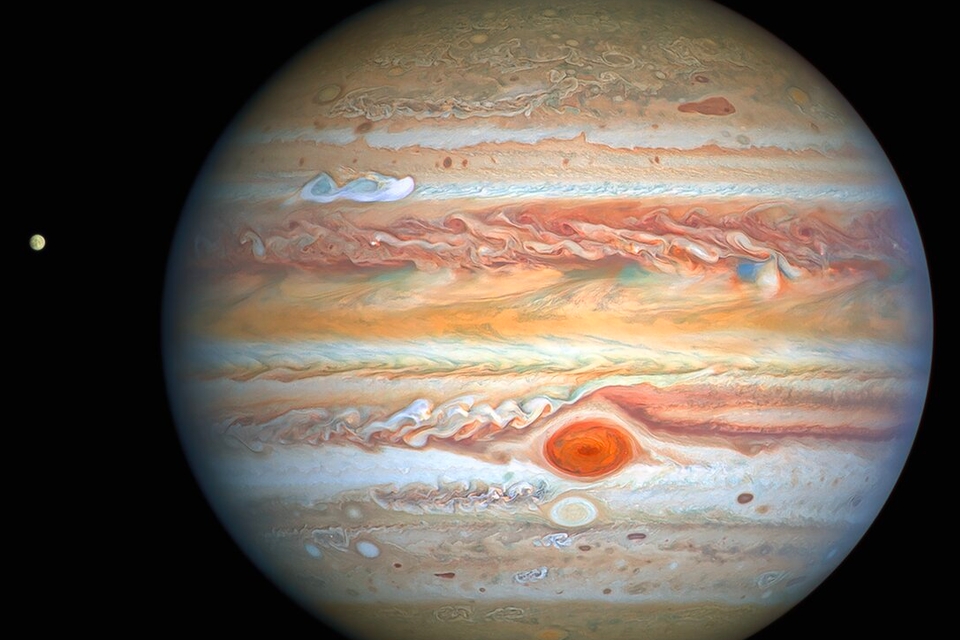And also moon Europe was mocked!
At the end of August, the mighty Hubble Space Telescope set its sights on Jupiter. The result is a spectacular photo, in which the Great Red Spot immediately catches the eye. But a relatively new storm in the northern hemisphere is also drawing attention.
New storm
This is the bright white, slightly smeared spot that you see on the top left of Jupiter. The storm appears to consist of two parts; the first was spotted on August 18 and not much later the second part was created. While it is not uncommon for new storms to form in this region, this disturbance appears to be more structured than previously observed storms.
Scientists do not exclude the possibility that this could be the beginning of a long lasting storm that may eventually even measure up to the legendary Great Red Spot that has dominated the southern hemisphere for hundreds of years.
The latest Hubble photo of Jupiter. Image: NASA, ESA, A. Simon (Goddard Space Flight Center) & MH Wong (University of California, Berkeley) & OPAL team.
–
Big Red Spot
That Great Red Spot may have lasted a long time; recent studies indicate that this has been subject to change in recent decades. For example, the storm – which today is about 15,800 kilometers wide and is therefore large enough to harbor the earth – is getting smaller and smaller. It is still unclear why that is. Hubble’s new photo shows that the Great Red Spot is currently an exceptionally bright red color, with its core and outer rim in particular being deep red. It is also clearly visible that the storm is plowing through some clouds, resulting in white and beige waves.

Here you see Oval BA in more colorful times. Image: NASA, ESA, A. Simon-Miller (NASA / GSFC) & I. de Pater (University of California Berkeley).
–
Oval BA
But a lot more is going on on the gas giant, the photo shows. This clearly shows that the Oval BA – the storm right below the Great Red Spot – has changed significantly. Where it was still very red in 2006, it is very pale today. However, the core of it now seems to be slightly redder. It could just indicate that the storm will get more color in the coming period.
In addition to Jupiter, the photo also shows the icy moon Europa emerging. The moon has appealed to the imagination for years. For example, there are strong indications that under its ice crust lurks a liquid ocean in which life may be possible. Reason enough for the European Space Agency to take a closer look at the moon in the near future; in 2022 ESA will become ‘ jUpiter ICy moons Explorer (JUICE for short), and it should explore more closely both Jupiter and its three largest moons – Ganymede, Callisto and Europa.
POPULAR ON SCIENTIAS.NL
Keep amazed ✨
Receive the most beautiful space photos and interesting popular science articles every Friday. Get the free Scientias Magazine together with 50,000 others.
–


